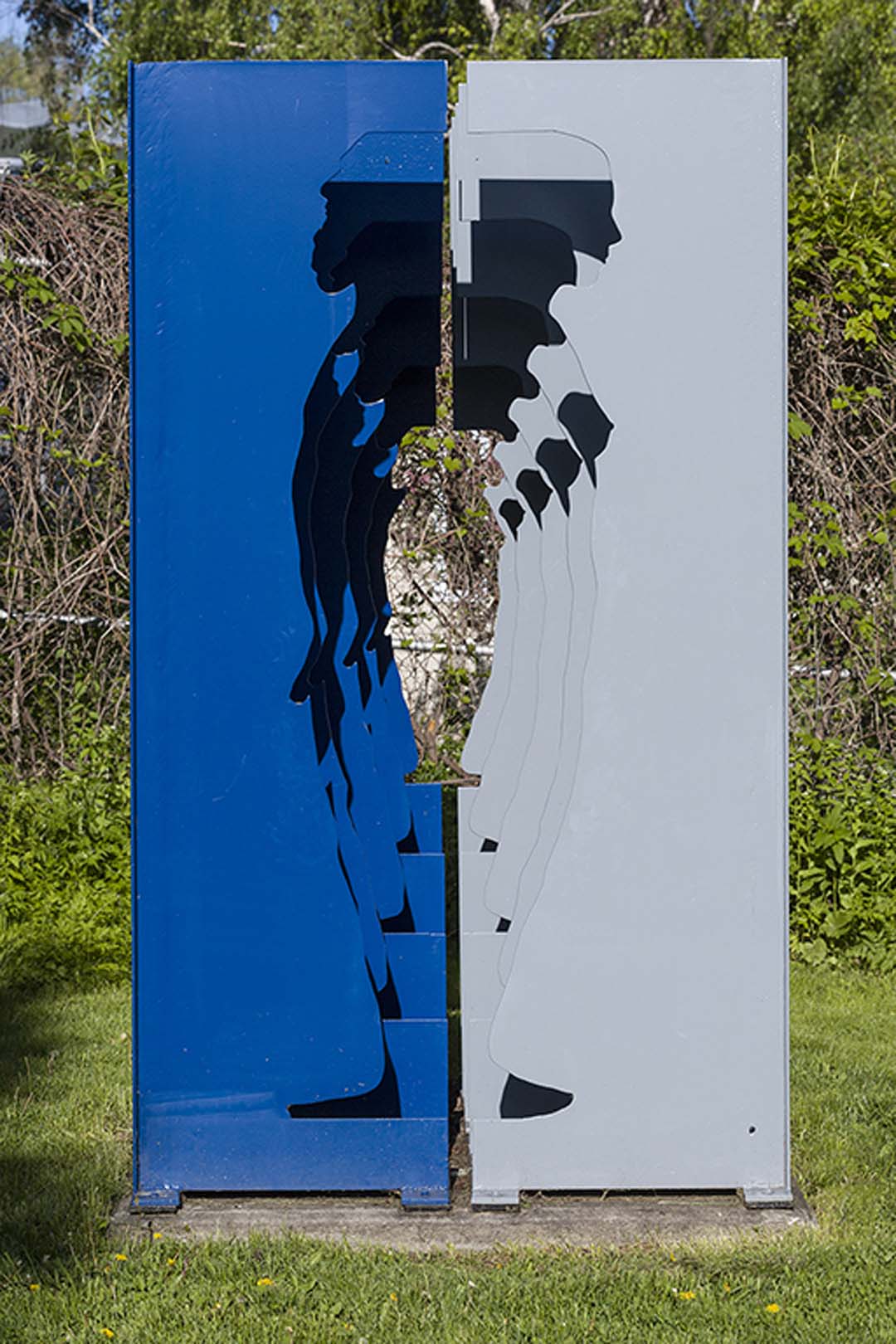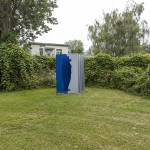

André Fournelle studied sculpture by taking workshops in the United States, Italy, Belgium, France, and Germany. His work results from a fusion of various sources of inspiration, including natural elements (water, earth, air, fire), simple geometric forms (circle, triangle, square, cross), and currents of art history (Russian constructivism, pop art, Viennese actionism).
A prolific producer of artworks since 1965, he has created a number of artworks integrated with architecture, including Un moment vivant (2000), at the Taipei airport in Taiwan, and outdoor interventions such as Spirale (1989), a tribute to Robert Smithson, displayed in the Death Valley desert of California.

Artwork description
Near the Musée de Lachine stand two parallel series of five panels – one blue, the other grey – on a concrete base. They present a series of cut-out silhouettes, in decreasing sizes, of the profiles of a naked man and woman.
This light-hearted work plays on its constitutive oppositions. Between its two-dimensionality and its three-dimensionality, beyond the presence of the coloured plates and the profiles produced by the absence of material, the figures of opposite sexes, placed back to back, form in the negative space between them an enigmatic two-headed figure that recedes in a succession of planes.
As he had in his artworks Hot dog (1970) and Joyce (1972), Fournelle presents here a sculpture influenced by pop art, an American art current in which the imagery and dissemination methods of popular culture were used. In this case, the repeated and rhythmic shapes of Nous deux refer directly to serigraphs made by Warhol and other artists.



